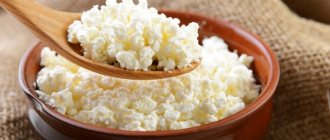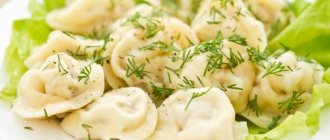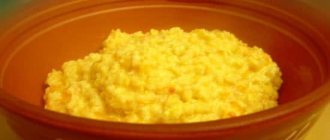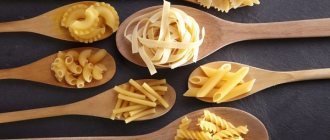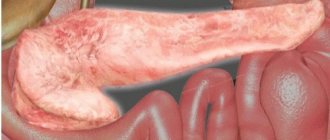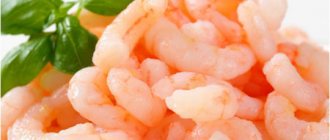The diet for acute and chronic pancreatitis (inflammation of the pancreas) is built according to strict rules. The consumption of many foods must be limited or completely excluded from the diet - at least until the end of the exacerbation period. But this does not mean that the diet menu should consist only of unsalted cereals and soups cooked in water. The patient's table can be varied with various dishes, including different versions of casseroles, which will be equally useful for both adults and children. Simple and tasty recipes are offered in this article.
What is pancreatitis
Pancreatitis is an inflammatory process in the pancreas (a vital organ that is responsible for the normal functioning of the entire body). They are usually accompanied by sharp, paroxysmal pain in the organ area.
Over time, a person suffers from this more and more often. Painful sensations become more intense and unpleasant. This interferes with a person’s normal life, and he begins to look for ways to fight pancreatitis. Then he is forced to seek help from doctors who prescribe treatment and a special diet. It often includes cottage cheese casserole. It is very useful for pancreatitis.
Benefits and potential harm
Cottage cheese casserole is a nutritious, tasty and healthy dish that can be included in the diet for acute pancreatitis already 3 weeks after the attack occurs. Cottage cheese is well absorbed, helps normalize digestion and eliminate dyspepsia that accompanies inflammation of the pancreas. Protein, contained in large quantities in this product, stimulates the regeneration of cells in the affected organ and accelerates recovery, while vitamins and minerals help strengthen the immune system and improve the condition of the entire body.
Diet for pancreatitis: what not to eat
Often, a timely visit to a doctor can greatly alleviate the patient’s condition if quality therapy is started. However, pancreatitis is a disease that cannot be completely cured. It must be constantly monitored so that the symptoms do not worsen. So, doctors recommend adhering to a special diet for such a diagnosis.
It is necessary to exclude the following foods from the diet:
- spicy, highly salty foods;
- excessively fatty foods;
- fried foods;
- sugar, chocolate and other sweets;
- carbonated drinks;
- smoked meats (sausages, fish, cheeses).
Diet for pancreatitis: what you can and should eat
Food products that are allowed for pancreatitis are not only porridge and steamed meat. This diet is quite varied and nutritious. You just need to find time to cook. So, with pancreatitis you need to eat:
- protein in sufficient quantities: beef, chicken, rabbit, turkey, pork, but lean.
Is it possible to have cottage cheese casserole for pancreatitis? Yes, if the cottage cheese is low-fat and fresh. It is so useful that it must be used without fail.
Many people love milk very much, some have a hard time being separated from it, even for a while. Therefore, it is allowed to be added to soup, to jelly, to the same cottage cheese casserole. For pancreatitis, a casserole in which cottage cheese is diluted with milk will be very useful.
Fermented milk products will be incredibly valuable for pancreatitis; they have a beneficial effect on the stomach and pancreas. They also restore intestinal microflora well.
Fruits should also be in the diet of a person following such a diet. These could be apples (not very sour), bananas. It is better to bake apples or make a salad from them with the addition of carrots.
To drink, you can use herbal teas, milk tea, and sweet juices.
Is it possible to eat cottage cheese during pancreatitis in the acute phase and during remission?
Acute pancreatitis can be either moderate or severe:
- with moderate pancreatitis, severe abdominal pain and vomiting are observed,
- in severe forms, pancreatic necrosis develops, causing systemic inflammation and intoxication.
In both cases, the reason is that the enzymes produced by the pancreas do not enter the duodenum to digest the food mass coming from the stomach. Remaining in the gland itself, they begin to digest it, which causes severe pain and necrosis (death) of the organ tissue.
Therefore, there is no need to talk about eating any food during acute pancreatitis. For 4-5 days, such patients are shown complete fasting. In severe cases, forced hunger strike may last longer. In this case, patients with acute pancreatitis are given the necessary nutrients through an IV.
The remission period has 2 phases:
- Incomplete remission is a period when there is a significant weakening of the symptoms of the disease. This is exactly the period when doctors consider it advisable to introduce cottage cheese into the diet. The product must be low-fat and thoroughly ground. The daily norm of 150 g is divided into several doses.
- Complete remission is pancreatitis in a chronic form, when symptoms are completely absent. It is during this period that you can eat cottage cheese dishes.
You can eat it either in its pure form or as part of dishes. For example, curd pudding for pancreatitis diversifies the dietary menu. But you need to choose the right starting product.
Cottage cheese casserole for pancreatitis: recipe
The casserole can be prepared in many ways, with the addition of a variety of ingredients. You should choose according to your taste, then build on the products in the refrigerator. Many housewives prepare this dish salty, but the classic casserole is sweet.
Cottage cheese casserole in the oven for pancreatitis is prepared easily and quickly. For this you need to take:
- fresh cottage cheese 300-400 g;
- chicken egg - 2 pcs.;
- powdered sugar - 100 g;
- semolina 80-90 g;
- yogurt without additives 70 - 100 g;
- baking powder for dough - 5 g;
- a piece of butter for greasing the pan.
In a deep plate, mix cottage cheese with eggs. You need to stir until you get a mass similar to store-bought curd mass. Then add powdered sugar and mix again. Add yogurt and baking powder. Now pour in the semolina and mix again. Grease the mold with a piece of butter and place the dough into it. Cottage cheese casserole for pancreatitis of the pancreas should be cooked at 180 °C for 30-40 minutes. Check readiness with a toothpick. If it remains dry, the dish is ready. Take it out, wait until it cools down, cut it. This recipe for oven-baked cottage cheese casserole (the dish is shown for pancreatitis) can be remembered and implemented by anyone who has the desire and the necessary ingredients.
Chronic form
Doubts about whether it is permissible to eat cottage cheese when developing a chronic form of pancreatitis are understandable. At the same time, as experts note, at this stage it is necessary to adhere to the same rules as during the acute stage of the condition. At that period of disease development when there are no inflammatory processes and negative symptoms, the fat content of the product can be slightly increased and even reach 4-5%.
At the stage of formation of remission, when there are already clear diagnostic indicators, the percentage of fat content can reach nine points. At the same time, the product can be eaten not only as puddings or raw, but also as an addition to all kinds of cereals, pasta, and meat preparations. It is quite acceptable to eat such dishes as lazy dumplings, savory pastries, and cottage cheese casserole.
If stable remission develops and positive symptoms progress, experts allow the use of cottage cheese with 20% fat content. However, this must be done with caution because excessive use or use in large quantities may result in an exacerbation of pancreatitis. In addition, fatty cottage cheese can slow down the process of calcium absorption and can be a serious burden for the entire digestive system.
During remission, a high-protein diet is indicated, one of the main products of which is cottage cheese. Fat content can be increased to 5%. Cooking foods by heat treatment in the oven allows you to combine pumpkin, other vegetables and fruits, and cottage cheese in one dish
If a patient has a calcium deficiency in the body, it is recommended to prepare dishes based on calcined cottage cheese. It can be obtained at home by adding calcium chloride or lactic acid to skim milk.
Healthy casserole in a slow cooker
Cottage cheese casserole, according to nutritionists, is a truly healthy and nutritious dish that can be prepared in different ways. Cottage cheese casserole for pancreatitis in a slow cooker is a godsend for many who are on a diet.
You need to prepare it by taking:
- low-fat cottage cheese - 0.5 kg;
- chicken egg whites - 2 pcs;
- sugar - 30 g;
- sweet apple - 1 pc.;
- semolina - 50 g;
- water - 30 ml;
- baking powder - 5 g.
Pour the semolina with water (pre-heat it to 35-40 °C), then set the cereal aside so that it swells. Beat egg whites with sugar. Peel the apples and chop them with a grater, drain the juice. Grind the cottage cheese thoroughly with a fork, adding apples and egg whites with sugar. Then add semolina. Grease the multicooker bowl with butter and place the casserole dough into it. Set the baking mode. Cottage cheese casserole (it will definitely help with pancreatitis of the pancreas) should be cooked in a slow cooker for 40-50 minutes.
Useful properties of cottage cheese casserole
The cottage cheese that is part of the casserole is rich in many vitamins and microelements, without which the normal functioning of the body is impossible. Among them are B vitamins, calcium, selenium, copper, iodine, iron, magnesium, potassium. These elements are especially useful for children during their growth period.
Low-fat cottage cheese is considered very useful, from which people who are on a diet for certain reasons prepare a casserole. Also, low-fat cottage cheese is indicated for children, since their digestive system is weak to digest fatty foods.
Cottage cheese with a fat content of 4-5% is considered universal for consumption. It is suitable not only for diets, but also for athletes who lead a healthy lifestyle.
The benefits of cottage cheese for gastrointestinal diseases
Cottage cheese is an excellent product obtained as a result of the natural fermentation of whole milk. Then this sour milk is placed in a water bath or simply heated over low heat. When the protein part of the product separates from the whey and gathers into flakes, it is strained and placed under a press to drain the remaining whey. The resulting product can be eaten even with pancreatitis - inflammation of the pancreas. The beneficial properties of fermented milk product are:
- Cottage cheese contains 12 vitamins, the most valuable among them are A, D, E and B vitamins. All vitamins from cottage cheese are easily absorbed by the body in full.
- Minerals and trace elements significantly influence metabolic processes in the body and contribute to the formation of bone tissue due to the high calcium content.
- Milk protein - casein - can completely replace the proteins that come with meat, but without the purines contained in meat. Therefore, in dietary nutrition it has no equal among suppliers of easily digestible protein.
- Amino acids relieve the liver and promote better functioning of the gastrointestinal tract as a whole.
- Lactic acid bacteria enrich the gastrointestinal tract with beneficial microorganisms and promote intestinal motility.
Due to proteins, minerals and vitamins, the product is indispensable for pancreatitis. Inflammation of the pancreas prevents the intake of carbohydrate foods for some time, and protein from meat products is more difficult to digest.
How to choose the right cottage cheese in the store?
Few of us can boast that we buy homemade cottage cheese from our neighbor’s grandmother. Most people today prefer to purchase dairy products in stores. Cottage cheese was no exception. It can be found on supermarket shelves in packages of different weights and different fat contents. There are also so many manufacturers that your eyes are wide open from the range. Therefore, you need to know what you need to pay attention to so as not to buy a cottage cheese product, which many of us mistake for real cottage cheese.
Unlike natural cottage cheese, the cottage cheese product contains many additives in addition to cottage cheese. In the composition of natural cottage cheese you can see only whole milk and starter cultures. The curd product will contain preservatives, emulsifiers, flavorings, and acidity regulators. With such additives, unscrupulous manufacturers try to extend the life of the product they sell.
When choosing cottage cheese, it is also necessary to focus on the expiration date and how it looks. The shorter the shelf life of a product, the better its quality.
When eating cottage cheese, you need to add your favorite fruits or berries to it, you can pour it with honey or jam.
You can also put cottage cheese in salads, which is also very healthy. This fermented milk product is also used as a filling for diet pancakes or baked goods.
Rules of use
Processing foods in the oven will help preserve nutritional value, as it minimizes the destruction of vitamins, proteins and microelements, which is very important for pancreatitis. Gastroenterologists note the high digestibility of such dishes immediately after the symptoms of inflammation disappear.
It is recommended to include cottage cheese-based products for pancreatitis several days after the end of the acute phase of the disease. The permissible fat content of a fermented milk product should not exceed 3% with an acidity not exceeding 170°Turner, however, to prevent a possible negative reaction from the body, it is better to use low-fat cottage cheese.
In the chronic phase of the disease, the number of permitted products increases significantly; the consumption of casseroles and soufflés made from cottage cheese with the addition of berries, dried fruits and honey is allowed.
Harm of cottage cheese
In contrast to its beneficial properties, cottage cheese has virtually no harmful properties. However, there are people who exclude cottage cheese from their diet due to lactose intolerance. It can cause an allergic reaction if the immune system is weakened. There is an opinion that cottage cheese itself cannot cause an allergy, but can only become a “catalyst” through which an allergy to some other food product is detected.
In such cases, people exclude cottage cheese from the diet completely, which is wrong. Since cottage cheese is necessary for every person, its benefits for the body are incomparable. It is best to buy it in a store, but you should carefully select the product based on composition, expiration date and appearance.
People often believe that better quality dairy products can be purchased on the market. This is far from true! After all, there are often cases when quality certificates are fake. This is something you definitely can’t find in chain stores of large stores that value their reputation and won’t waste money on such trifles. Therefore, the choice of high-quality cottage cheese often depends on the attentiveness of the buyer himself.
Cottage cheese and the acute stage of pancreatitis
If a person’s pancreatitis is in the acute phase, then cottage cheese for pancreatitis should be introduced into the diet immediately after the end of fasting, since this product is rich in protein, which is easily digested. It is known that the human body digests protein from cottage cheese much faster than protein from meat.
Cottage cheese has several main characteristics that allow it to be an important product in the diet of patients with pancreatitis:
- Limiting inflammation;
- Production of protease inhibitors;
- Increased immune activity;
- Reducing the likelihood of complications.
However, it is noted that it is best for patients with pancreatitis to eat low-fat cottage cheese, the fat content of which is less than 3%. The acidity of the product, however, should not be higher than 170 on the Turner scale.
In this case, cottage cheese will not increase gastric and pancreatic secretion, regardless of how the cooking recipe is used.
Typically, cottage cheese can be eaten pureed or as a steamed pudding or casserole. If the patient has a calcium deficiency, then it is best to eat calcined cottage cheese. This version of cottage cheese is easy to make at home by adding lactic acid or calcium chloride to skim milk; as you can see, the recipe is extremely simple.
